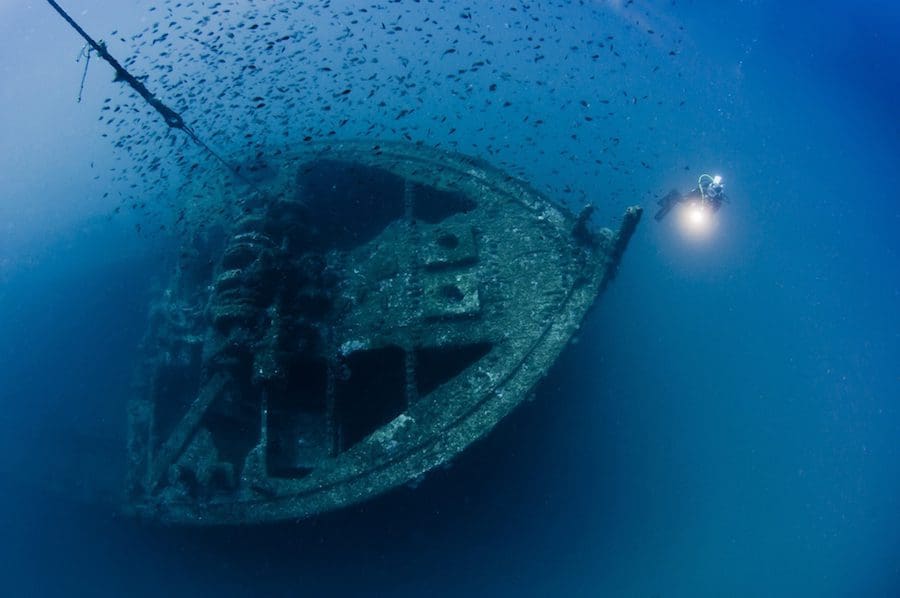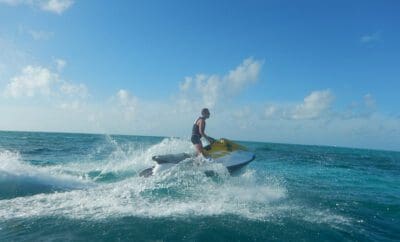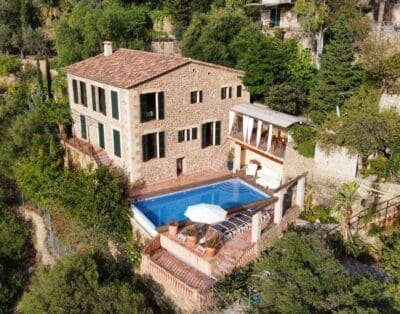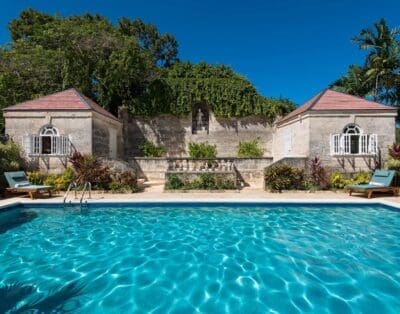Deep Sea Diving In The Costa Calida Spain
The Costa Calida, in the Region of Murcia, offers a rich variety of diving experiences for the beginner or the skilled diver.
The region’s seabed is blessed with a variety of marine life and flora, and numerous, fascinating historic shipwrecks, making the Cabo de Palos-Islas Hormigas-Isla Grosa, Cartagena-La Azohía- Cabo Tiñoso, Mazarrón, and Águilas exceptional places for diving.
All offer the opportunity to enjoy everything from easy dives in shallow waters, to more challenging routes recommended only for more experienced divers. For assistance, there are numerous diving centres offering courses and dive experiences for all levels: from beginners, to more technical dives to large shipwrecks, underwater caves and crevices, suitable for the experienced diver.
In Cabo de Palos, Islas Hormigas and Isla Grosa – in the north-west of the region – one finds some of the best diving opportunities in the Mediterranean: spectacular reefs brimming with fish, overhangs and many seemingly unexplored caverns.
Beyond the lagoon, the tips of an ancient volcanic chain form islands and undersea mountains in one of Spain’s oldest marine reserves, dating from 1995. Not only is it a stunning place to come face to face with marine life, but there are also traces of wooden vessels, both Roman and Phoenician, at the Bajo de la Campana site, just off the Isla Grosa – which itself features a stunning underwater posidonia oceanica meadow. Indeed, at one site a Phoenician trading ship is concealed beneath a Roman vessel while both sit atop another Phoenician ship.
Use of the site for naval target practice down the years has created a number of hazards, which, consequently, have generated a large collection of wrecks, many in excellent condition.
Meanwhile, Cartagena, protected as it is from the easterly wind, offers the possibility of discovering archaeological remains, such as ancient amphora, in the sands, though it should be remembered the artefacts are protected items and nothing can be removed from the seabed. Some of those which have been legitimately taken away may be seen in the ARQUA museum.
The clear waters provide a perfect window on the resting place of many wrecks, from ancient times through to the modern era – there is even the fuselage of a Harrier (Jump Jet), sunk by the navy for training purposes – with several a result of action in the two world wars. La Azohía is known for its cave diving, while Cabo Tiñoso has also, recently, been made a marine reserve.
The diving zone around Mazarrón mainly occupies 10 miles around the port, where there are depths of up to 60m, with deserted coves and underwater caves.
Many of the wrecks here – including a Spanish minesweeper, the Dragaminas Nalon – have been sunk deliberately to create artificial reefs, which attract all manner of sealife including barracuda, swordfish, moray eel, grouper, conger eel, octopus, blue-spotted rays, and many more.
The naturally protected waters around Águilas produce ideal diving territory, with many sheltered spots affording both wrecks and fauna.
And, for absolute beginners, there’s no better place to first test your mettle with diving lessons than in the shallow, calm and warm waters of the Mar Menor, one of Europe’s largest saltwater lagoons.
The Estación Náutica Mar Menor – Cabo de Palos provides partner schools for a variety of family water-based activities, in Mar Menor and La Manga, and also offers accommodation in hotels, apartments, campsites and youth sports hostels. Its travel packages include accommodation, nautical activities and rental equipment, if required.
The Federación de Actividades Subacuáticas de la Región de Murcia, acts as a contact hub for most diving clubs in the region, while the PADI (Professional Association of Diving Instructors) website lists accredited dive centres in Murcia, and the Association of Diving Centres in the Region of Murcia (ACBRM) acts as an umbrella organisation for recreational diving companies in the region.
You can rent a beautiful villa in Spain for much less than you would think.
Access to Costa Cálida, Región de Murcia, is simple as it is served by Murcia-San Javier airport all year round, while Alicante airport is also nearby. Both airports are served by numerous other airlines flying from a wide variety of UK and Irish airports and flights in June cost from just £26 one way.
www.murciaturistica.es/en









